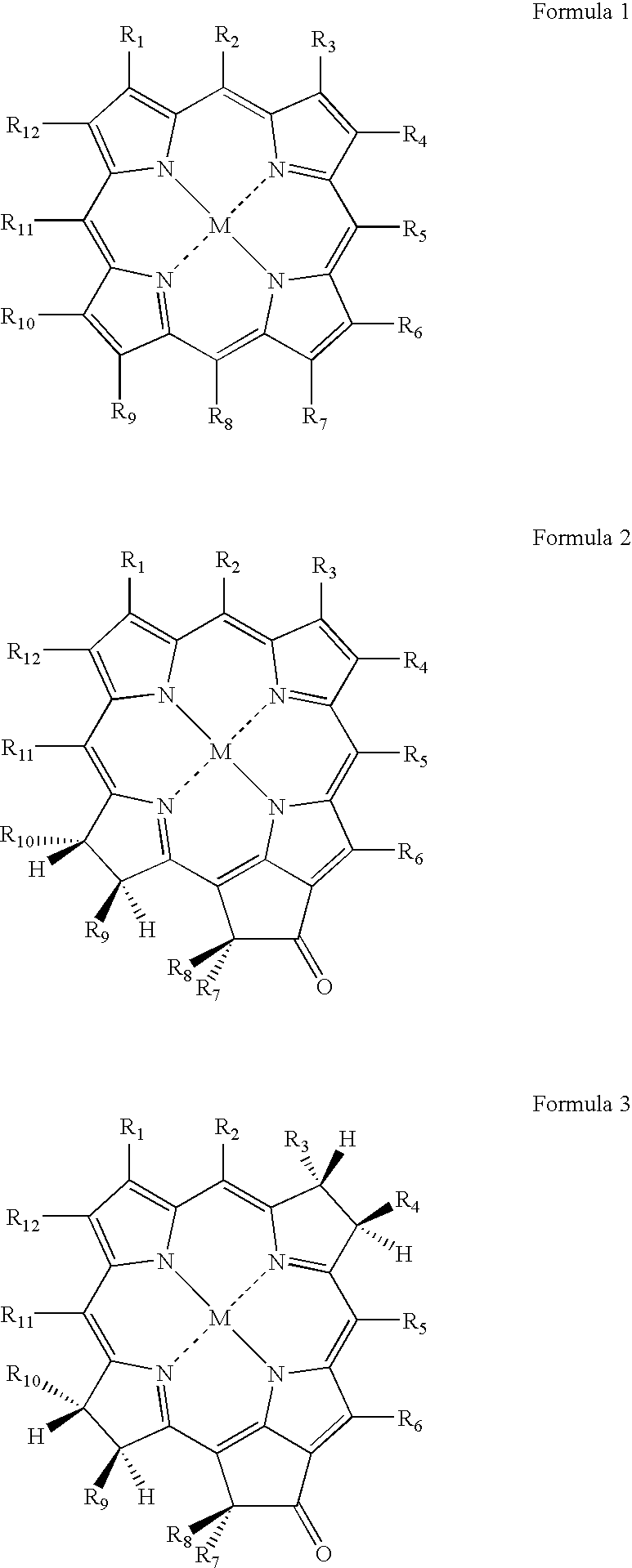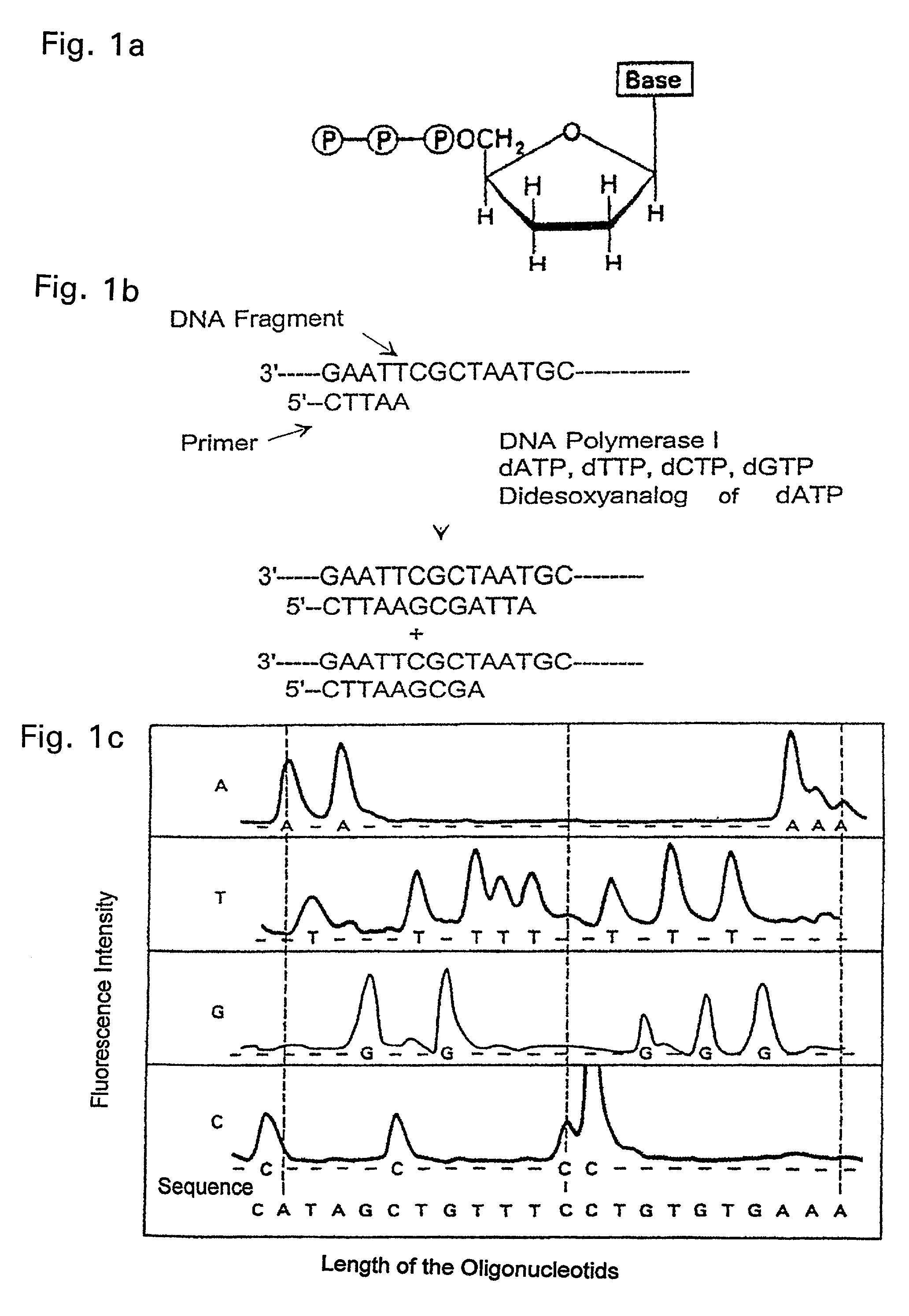Method of the electrochemical detection of nucleic acid oligomer hybrids
a nucleic acid oligomer and hybrid technology, applied in the field of modified nucleic acid oligomers, can solve the problems of reducing detection time, affecting the electrochemical detection effect, and high sensitivity, and achieves the effect of easy to undergo typical reactions and great reactivity
- Summary
- Abstract
- Description
- Claims
- Application Information
AI Technical Summary
Benefits of technology
Problems solved by technology
Method used
Image
Examples
example 1
[0051]Producing the Au—S-ds-oligo-PQQ oligonucleotide electrode. The production of Au—S-ds-oligo-PQQ is divided into 4 subsections, namely producing the support surface, hybridizing the probe oligonucleotide with the complementary double strand (hybridization step), derivatizing the support surface with the double-strand oligonucleotide (incubation step) and attaching the redox-active substance (redox step).
[0052]An approx. 100 nm thin gold film on mica (muscovite platelets) forms the support for the covalent attachment of the double-strand oligonucleotides. To this end, freshly cleaved mica was purified with an argon-ion plasma in an electrical discharge chamber and gold (99.99%) was applied, by means of electrical discharge, in a layer thickness of approx. 100 nm. Thereafter, the gold film was freed of surface impurities (oxidation of organic accumulations) with 30% H2O2, / 70% H2SO4 and immersed in ethanol for approx. 20 minutes to dispel any oxygen adsorbed to the surface. After ...
example 2
[0056]Producing the Au—S-ss-oligo-PQQ oligonucleotide electrode. Analogously to the production of the Au—S-ds-oligo-PQQ system, the support surface is derivatized with modified single-strand oligonucleotide, dispensing with only the hybridization of the modified oligonucleotide of the sequence 5′-TAGTCGGAAGCA-3′ SEQ ID NO: 1 with its complementary strand and, in the incubation step, using only the double-modified 12 bp single-strand probe oligonucleotide (see Example 1) in the form of a 1×10−4 molar solution in water and in the presence of 10−2 molar Tris, 10−3 molar EDTA and 0.7 molar TEATFB (or 1 molar NaCl) at pH 7.5. The redox step was carried out as indicated in Example 1.
example 3
[0057]Producing the Au—S-ds-oligo-PQQ oligonucleotide electrode having 2 bp mismatches. The production of a support surface derivatized with modified double-strand oligonucleotide was carried out analogously to the production of the Au—S-ds-oligo-PQQ system, but only in hybridizing the modified oligonucleotide of the sequence 5′-TAGTCGGAAGCA-3′ SEQ ID NO: 1 was a complementary strand used (sequence: 5′-ATCAGATTTCGT-3′) SEQ ID NO: 2, in which bases no. 6 and 7 (counted from the 5′ end), which are actually complementary, were modified from C to A or from C to T to introduce two base-pair mismatches.
PUM
| Property | Measurement | Unit |
|---|---|---|
| angle | aaaaa | aaaaa |
| conductive | aaaaa | aaaaa |
| chain length | aaaaa | aaaaa |
Abstract
Description
Claims
Application Information
 Login to View More
Login to View More - R&D
- Intellectual Property
- Life Sciences
- Materials
- Tech Scout
- Unparalleled Data Quality
- Higher Quality Content
- 60% Fewer Hallucinations
Browse by: Latest US Patents, China's latest patents, Technical Efficacy Thesaurus, Application Domain, Technology Topic, Popular Technical Reports.
© 2025 PatSnap. All rights reserved.Legal|Privacy policy|Modern Slavery Act Transparency Statement|Sitemap|About US| Contact US: help@patsnap.com



